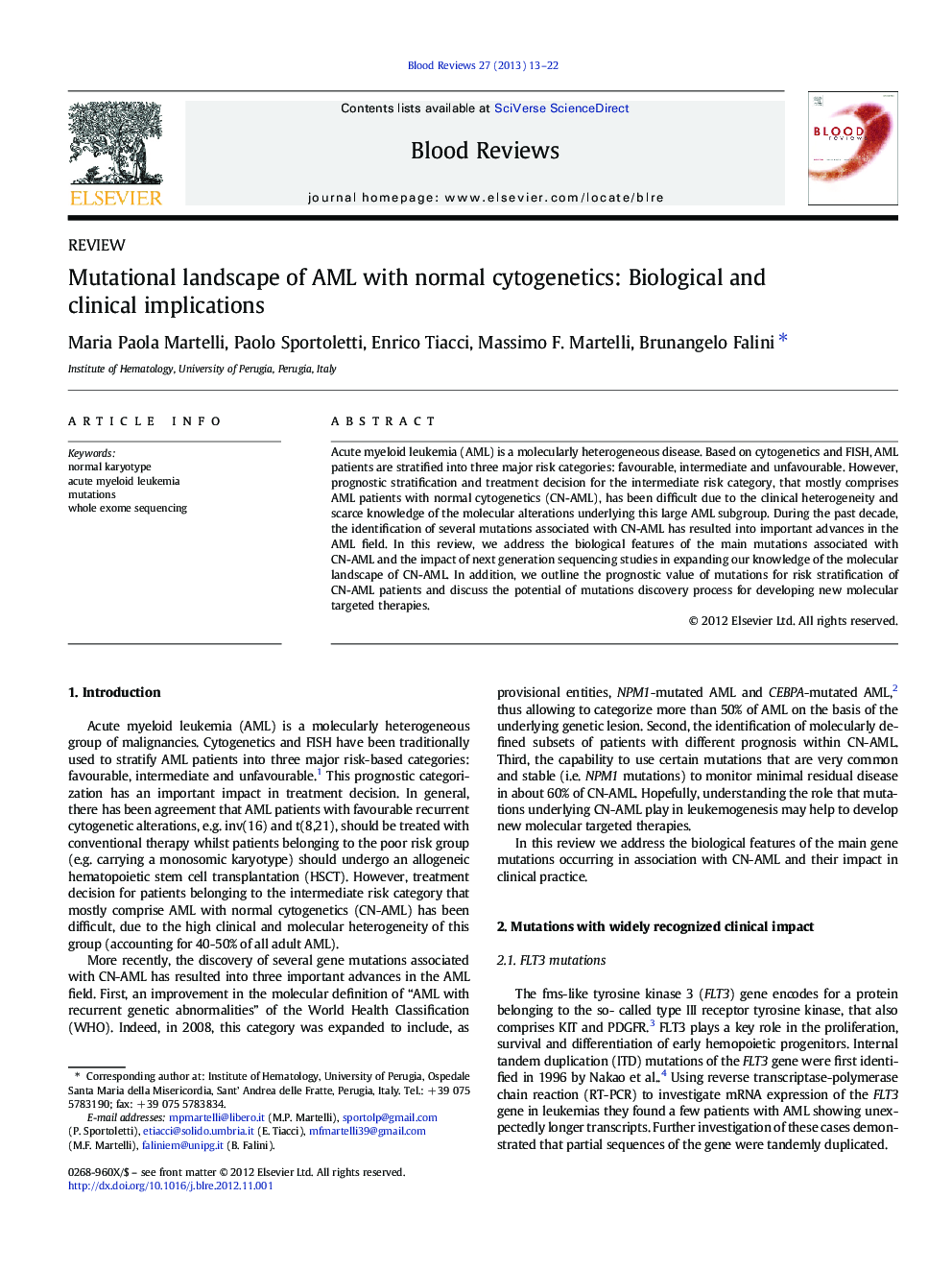| Article ID | Journal | Published Year | Pages | File Type |
|---|---|---|---|---|
| 10895788 | Blood Reviews | 2013 | 10 Pages |
Abstract
Acute myeloid leukemia (AML) is a molecularly heterogeneous disease. Based on cytogenetics and FISH, AML patients are stratified into three major risk categories: favourable, intermediate and unfavourable. However, prognostic stratification and treatment decision for the intermediate risk category, that mostly comprises AML patients with normal cytogenetics (CN-AML), has been difficult due to the clinical heterogeneity and scarce knowledge of the molecular alterations underlying this large AML subgroup. During the past decade, the identification of several mutations associated with CN-AML has resulted into important advances in the AML field. In this review, we address the biological features of the main mutations associated with CN-AML and the impact of next generation sequencing studies in expanding our knowledge of the molecular landscape of CN-AML. In addition, we outline the prognostic value of mutations for risk stratification of CN-AML patients and discuss the potential of mutations discovery process for developing new molecular targeted therapies.
Related Topics
Life Sciences
Biochemistry, Genetics and Molecular Biology
Cancer Research
Authors
Maria Paola Martelli, Paolo Sportoletti, Enrico Tiacci, Massimo F. Martelli, Brunangelo Falini,
